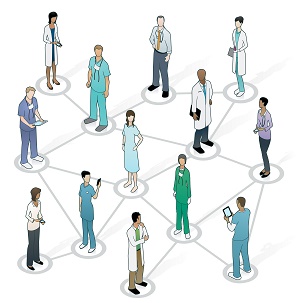 Overview:
Overview:
Customer Relationship Management (CRM) platforms have exploded in popularity in the health care industry. Pharmaceutical companies, health insurers and third-party vendors use them in relatively traditional ways to manage sales, marketing and customer support. But, healthcare providers can use CRM in a novel way to streamline network development and take advantage of their flexibility and use for a variety of applications.
Organizations developing networks of health providers, like independent physician associations (IPAs), accountable care organizations (ACOs) or hospitals managing referral networks, face substantial challenges when managing data about their relationships with providers. Often, critical information about provider networks are kept in a large number of spreadsheets, which is very risky. Version control problems are common and many organizations expend precious resources trying to reconcile data that is different in each document. Contacts, quality outcomes, provider engagement statistics and existing contracts are commonly stored in disparate places, even though this information needs to be integrated to help organizations make decisions that can improve the performance of their network.
Opportunities
CRM systems streamline the process of managing a network by putting contact information, provider contracts, performance targets, and quality data all in one place. In addition, with modern cloud-based CRM platforms, version control issues are minimized as updated information is immediately viewable by all users of the system. A change of contact information is immediately available to the executive creating a list of providers he wants to call. CRM serves as a source of truth about each provider and is the engine that generates reports.
Provider relations teams are usually the power users of CRM systems in provider networks. Whenever they have conversations with their contacts, high-functioning provider relations teams will be logged into their CRM system, entering notes about the discussion and updating critical data, like when a contact has changed or they learn that a provider is considering changing networks. The organization’s leaders usually leverage CRM mainly for reports that can help them make better decisions, like creating lists of low-performing providers for either remediation or for removal from the network.
After the basic functionality is in place, there are lots of opportunities to use CRM to help improve how the provider network functions. Lots of third-party products integrate with the most popular CRM systems, allowing organizations to leverage their CRM to make better decisions and generate new insights. Mapping services enable easy geographic analysis of partner networks, letting leadership quickly see, for instance, the locations of providers that speak Spanish overlaid on a map of Spanish-speaking households. Marketing and communications products can let the communications team quickly send email blasts to selected contacts, like sending updates on clinical reporting directly to the contact designated for reporting at each provider’s office.
In addition, CRM platforms can often be configured to pull data from centralized data warehouses. If many of a network’s providers are all on a health information exchange, this can be an excellent source of data for CRM. Nearly real-time quality and cost data can be imported from the data warehouse into the CRM system, providing critical information about the performance of the network. Instead of waiting for claims data, which is often delayed by six months or even more, the network’s clinical leadership can quickly react and provide course-correction assistance to providers that are failing to meet critical quality metrics for the network. As organizations move farther into value-based care arrangements, this continuous surveillance of quality data will be increasingly crucial.
Finally, networks can open up their CRM systems to their providers to give them a portal to log in and access to their information. Providers can derive substantial benefits from CRM through gaining easy access to their performance milestones, quality metrics and other data. By seeing how they are performing on clinical quality metrics relative to their peers, they can learn about what areas they need to improve. They can also track how they are performing on value-based measures in near real-time, allowing them to more accurately forecast their revenues. Providing useful revenue forecasting services to providers will make them more likely to stay in the network and can be a selling point to high-performing providers that the network tries to recruit.
Challenges
To function properly, the CRM system needs to be populated with high-quality data from the beginning. When an organization is moving from spreadsheets managed across several departments, it’s often difficult to even understand which data in one department matches with data in other departments. This cleanup process is crucial to getting quality information in the CRM system. At the same time, the process needs to be completed quickly, since new data is being continuously collected by different departments. The tension between quality and speed leads to a critical insight: it’s impossible to have perfectly clean data to load into a CRM system, so a threshold of estimated accuracy needs to be decided upon beforehand. Once the system goes live, some organizations have found success by having a break-in period where each provider is contacted within the first month to ensure the accuracy of the data.
The ultimate challenge is to create a culture where everyone is constantly using the CRM system. If the system isn’t constantly updated with the latest information, trust in the data’s integrity is undermined, further driving down use and creating a death spiral for the CRM platform. Leadership must make it clear that employee performance will be judged in part based on the quality and frequency of their updates to the system, particularly for power users like the provider relations team.
About COPE Health Solutions
COPE Health Solutions has deep expertise in clinical redesign and business requirements development for population health and integrated delivery systems. We understand the complex implications for health system lead agencies and partners. Our team has unparalleled experience and a proven track record of success from planning to implementation to measurement in New York, Texas and California. For more information on our experience, please refer to our services here.

